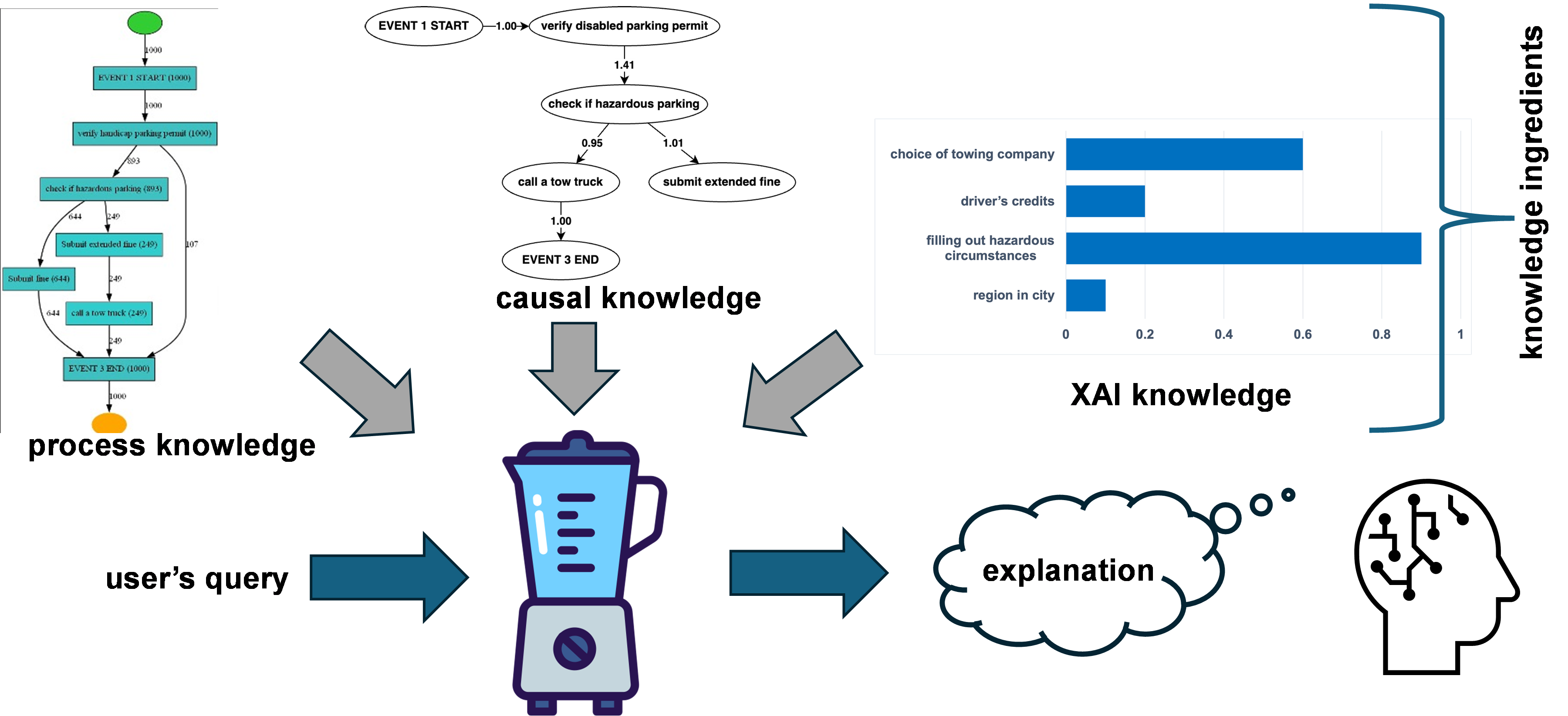Overview of Business Process Management (BPM)
Business processes represent sequences of tasks structured to achieve specific business goals, such as service delivery or product creation. These processes are often visualized as process models to facilitate understanding and optimization. Business Process Management (BPM) encompasses discovering, modeling, analyzing, and optimizing these processes. Recent advancements in AI and machine learning have introduced both opportunities and challenges, particularly in ensuring the trustworthiness of these technologies when intertwined with business operations. Consequently, as with the employment of experts, organizations must build “trust” in these AI technologies. One of the key factors in fostering users’ trust, and, consequently, promoting adoption and usage, is the capability of the system to provide explanations.
The FAME project focuses on developing a novel marketplace for digital assets and analytics, where explainability about business process outcomes and decisions is made accessible to business owners. This enables them to leverage their data to address user questions, such as “Why was my mortgage application rejected?” in a mortgage business process.
Challenges in Explainable AI (XAI) for BPM
Despite progress, current use of XAI solutions for BPM explainability exhibits several limitations:
Lack of process awareness – Current solutions are agnostic to the flow control, meaning many explanations fail to account for constraints inherent in the process model, resulting in irrelevant insights. For example, demographic attributes like age might be included in explanations for mortgage delays, even in cases where none of the process executions that correspond to delayed applications have been affected by the preliminary screening step at which demographic information is reviewed.
Contextual information gaps – Explanations often lack context, overlooking situational factors critical to process outcomes. For example, delays in mortgage approvals might stem from a policy requiring rejection if processing exceeds five days. Such a situation could be missed by conventional XAI techniques if it is not explicitly recorded in the system’s event log.
Ability to reflect the true causal execution dependencies among the activities in the business process– Existing models prioritize temporal precedence over causal dependencies, which can mislead users. For instance, in a mortgage application process, “Emailing” the client often precedes “Archiving” the data in logs, even though the two activities may not be causally linked. This misunderstanding can lead to ineffective resource allocation.
Human Interpretability – Explanations are often too complex for users to grasp, especially since humans are typically best suited to communicate through natural language. For example, factors contributing to delays in application processing may be numerous, and explanations presented in a chart may be uninterpretable to users.
SAX: Situation Aware eXplainability for BPM
The FAME project introduces SAX to overcome these challenges by leveraging cutting-edge AI technologies to generate contextually rich, process-aware, causally sound, and interpretable explanations.
 SAX is a suite of technologies developed by IBM Research as part of the FAME EU project to address the listed shortcomings, with the aim of generating explanations about business process conditions by leveraging recent AI advancements.
SAX is a suite of technologies developed by IBM Research as part of the FAME EU project to address the listed shortcomings, with the aim of generating explanations about business process conditions by leveraging recent AI advancements.
Key Innovations in SAX
Model-Informed Extensions – Adapting techniques like LIME and SHAP to ensure that explanations adhere to process constraints.
Context Enrichment – By employing complex event processing (CEP), SAX integrates situational data into explanations, such as highlighting cases where process activities exceed time thresholds.
Causal Discovery – SAX leverages LiNGAM causal discovery algorithm to identify causal relationships between process activities, enabling actionable interventions.
Enhanced Interpretability – SAX incorporates Large Language Models (LLMs) to deliver user-friendly explanations.
SAX4BPM Library and Core Services
These key innovations are packaged into capabilities as services, as part of the open-source SAX4BPM library, accessible at https://github.com/IBM/sax4bpm
The SAX4BPM library employs a developed methodology called ‘FBI,’ which stands for Form, Blend, and Interpret. The main idea is to blend different knowledge ingredients that address various shortcomings associated with current use of XAI for process explainability and input them into a large language model (LLM), such as ChatGPT, to generate better explanations.
- The process knowledge ingredient incorporates process model constraints and contextual situations that influence process outcomes.
- The causal model ingredient captures the true causal execution dependencies among the activities in the business process.
- The XAI knowledge ingredient reflects the relative importance of the attributes of the activities within the process.
These knowledge ingredients are synthesized by the LLM to generate a natural language sound explanation interpretability for human users.

For more information about SAX, we encourage you to watch the recorded webinar session here:
Authors: Fabiana Fournier and Lior Limonad (IBM Research, Israel)
—
Subscribe to our newsletter for the latest updates, and follow FAME on LinkedIn and X to be part of the journey.
More info:
IBM
